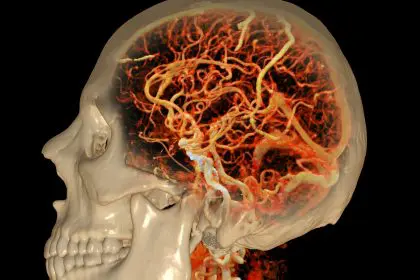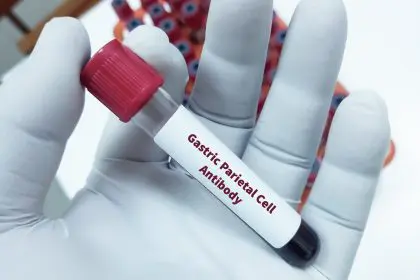The stomach cramps started innocently enough after dinner, dismissed as typical indigestion from eating too quickly. Within hours, what seemed like minor discomfort escalated into violent illness that left the entire household questioning every meal consumed over the past few days. Food poisoning strikes millions of Americans annually, ranging from mild inconvenience to life-threatening emergencies that require immediate medical intervention.
Understanding the difference between routine stomach upset and dangerous food poisoning can mean the difference between recovery at home and hospitalization. The symptoms often develop gradually, making it challenging to recognize when professional medical care becomes necessary. Certain warning signs indicate serious complications that can become fatal without proper treatment, while other symptoms respond well to home care and time.
The complexity of food poisoning extends beyond simple stomach problems, involving multiple body systems and potentially causing long-term health consequences. Different types of foodborne pathogens produce distinct symptom patterns, treatment requirements, and recovery timelines. Recognizing these differences empowers individuals to respond appropriately and seek help when necessary.
Emergency symptoms requiring immediate medical attention
Severe dehydration represents the most immediate threat from food poisoning, developing rapidly when the body loses fluids faster than they can be replaced. Signs include dizziness when standing, decreased urination, dark yellow urine, dry mouth and lips, and skin that remains pinched when pulled up. These symptoms indicate dangerous fluid loss that can lead to kidney failure, shock, and death without prompt treatment.
High fever above 102°F (38.9°C) suggests serious bacterial infection that may require antibiotic treatment. Fever combined with severe abdominal pain, bloody stools, or persistent vomiting creates a medical emergency requiring immediate evaluation. The combination of high fever and neurological symptoms like confusion or severe headache may indicate life-threatening complications.
Blood in vomit or stool indicates significant tissue damage that requires immediate medical assessment. Bright red blood suggests active bleeding, while dark, coffee-ground appearance in vomit or black, tarry stools may indicate internal bleeding. Any visible blood in body fluids during food poisoning episodes demands emergency medical care.
Severe abdominal pain that worsens progressively or becomes localized to specific areas may indicate complications beyond simple food poisoning. Appendicitis, intestinal perforation, or other surgical emergencies can develop during severe foodborne illness episodes. Pain that prevents normal movement or causes doubling over requires immediate medical evaluation.
Progressive symptom development patterns
Food poisoning symptoms typically follow predictable patterns based on the type of pathogen involved and individual immune response. Initial symptoms often begin within hours of consuming contaminated food but may be delayed up to several days depending on the organism involved. Early recognition of symptom progression helps determine appropriate response and treatment timing.
Nausea usually develops first, often accompanied by loss of appetite and general malaise. This phase may last several hours before progressing to active vomiting. The frequency and severity of vomiting episodes provide important clues about the severity of the poisoning and need for medical intervention.
Diarrhea typically begins after vomiting has started, though some individuals experience both simultaneously. The character of diarrhea provides diagnostic information about the likely pathogen involved. Watery diarrheat suggests toxin-producing bacteria, while bloody diarrhea indicates invasive bacterial infection requiring different treatment approaches.
Abdominal cramping intensifies as the illness progresses, often becoming the most debilitating symptom. The location and character of pain can help identify the specific intestinal areas affected and guide treatment decisions. Cramping that prevents sleep or normal activities indicates more severe illness requiring medical attention.
Bacterial food poisoning characteristics
Salmonella infection produces symptoms that typically begin 12-72 hours after consuming contaminated food. The illness usually starts with nausea and cramping, progressing to frequent watery diarrhea that may become bloody. Fever commonly develops and may reach dangerous levels requiring medical treatment. Most cases resolve within a week, but some individuals develop complications requiring hospitalization.
Campylobacter poisoning often begins with flu-like symptoms including fever, headache, and muscle aches before gastrointestinal symptoms develop. The diarrhea is typically bloody from the onset and may be accompanied by severe abdominal pain. This type of food poisoning tends to last longer than other bacterial infections, sometimes persisting for two weeks or more.
E. coli infection, particularly from dangerous strains like O157:H7, produces severe bloody diarrhea with intense abdominal cramping. The absence of fever with bloody diarrhea suggests E. coli poisoning. Some cases progress to hemolytic uremic syndrome, a life-threatening complication affecting the kidneys and blood clotting system that requires immediate intensive care.
Clostridium perfringens poisoning typically develops within 8-12 hours of eating contaminated food and produces intense abdominal cramping with diarrhea but usually no vomiting or fever. The illness tends to be brief but can be severe in elderly individuals or those with compromised immune systems.
Viral foodborne illness patterns
Norovirus represents the most common cause of foodborne illness, producing rapid onset of violent vomiting and diarrhea. Symptoms typically begin 12-48 hours after exposure and may include low-grade fever, headache, and body aches. The illness usually resolves within 1-3 days but can cause severe dehydration due to the intensity of fluid losses.
Rotavirus primarily affects children but can cause severe illness in adults with compromised immune systems. The infection produces profuse watery diarrhea, vomiting, and fever. Dehydration develops rapidly, particularly in young children and elderly adults, requiring careful monitoring and possible medical intervention.
Hepatitis A transmitted through contaminated food produces different symptoms than typical food poisoning. Initial symptoms may include fatigue, nausea, and loss of appetite, followed by yellowing of the skin and eyes (jaundice). The illness can last several weeks and requires medical management to prevent complications.
Parasitic food poisoning manifestations
Giardia infection produces chronic diarrhea, abdominal cramping, bloating, and excessive gas. Symptoms may not appear for 1-3 weeks after consuming contaminated food or water. The illness can persist for months without treatment and may cause significant weight loss and nutritional deficiencies.
Cryptosporidium causes watery diarrhea that can be particularly severe in individuals with weakened immune systems. The infection may produce cycles of improvement and worsening that can last for weeks. Dehydration becomes a significant concern due to the prolonged nature of fluid losses.
Cyclospora produces prolonged illness with watery diarrhea, loss of appetite, weight loss, bloating, and fatigue. Symptoms may come and go in cycles and can persist for weeks or months without proper treatment. The chronic nature of the illness often requires medical diagnosis and prescription medication.
Toxin-mediated food poisoning
Staphylococcal food poisoning develops rapidly, usually within 1-6 hours of eating contaminated food. The illness produces sudden onset of severe nausea, vomiting, and abdominal cramping. Diarrhea may occur but is typically less prominent than vomiting. The rapid onset and brief duration help distinguish this type from bacterial infections.
Clostridium botulinum produces a completely different syndrome than other food poisoning organisms. Instead of gastrointestinal symptoms, botulism causes progressive muscle weakness starting with the face and head. Symptoms include double vision, difficulty swallowing, and eventual paralysis. This represents a medical emergency requiring immediate hospitalization.
Scombroid poisoning from improperly stored fish produces symptoms resembling an allergic reaction, including flushing, headache, rapid heartbeat, and sometimes gastrointestinal symptoms. The reaction typically begins within minutes to hours of eating contaminated fish and may require antihistamine treatment.
Home treatment strategies
Fluid replacement represents the cornerstone of home treatment for mild to moderate food poisoning. Clear liquids including water, broth, and electrolyte solutions help prevent dehydration while allowing the digestive system to rest. Small, frequent sips work better than large amounts that may trigger vomiting.
The BRAT diet (bananas, rice, applesauce, toast) provides easily digestible foods that can help firm loose stools while providing some nutrition. These bland foods are less likely to irritate an already inflamed digestive system. Gradual introduction of other mild foods can begin as symptoms improve.
Rest becomes crucial for recovery, allowing the immune system to fight infection while reducing stress on the body. Physical activity should be minimized until symptoms resolve completely. Sleep helps the body heal and may reduce the severity and duration of illness.
Anti-diarrheal medications should generally be avoided during bacterial food poisoning as they may prolong infection by preventing the body from eliminating harmful organisms. However, they may be appropriate for certain types of food poisoning or when diarrhea becomes severe enough to cause dangerous dehydration.
Medical treatment approaches
Healthcare providers focus primarily on preventing and treating dehydration through intravenous fluid replacement when oral intake proves insufficient. Severe dehydration requires immediate correction to prevent organ failure and other life-threatening complications. Electrolyte imbalances may also require specific correction with targeted replacement therapy.
Antibiotic treatment remains controversial for most bacterial food poisoning cases, as antibiotics may prolong bacterial shedding in some infections while providing benefit in others. Healthcare providers carefully evaluate each case to determine when antibiotic therapy is appropriate and safe.
Anti-nausea medications may be prescribed to control severe vomiting that prevents adequate fluid intake. These medications can help break the cycle of vomiting and dehydration, allowing for better recovery. Various formulations including suppositories may be used when oral medications cannot be retained.
Hospitalization becomes necessary for severe dehydration, persistent high fever, signs of complications, or inability to maintain adequate fluid intake at home. Hospital care allows for close monitoring and immediate intervention if complications develop.
Common contamination sources
Poultry products represent one of the highest risk foods for bacterial contamination, particularly with Salmonella and Campylobacter. Raw chicken and turkey require careful handling, storage, and thorough cooking to eliminate harmful bacteria. Cross-contamination from raw poultry to other foods creates additional risks.
Ground meat products carry higher contamination risks than whole cuts due to increased surface area and mixing during processing. Ground beef, pork, and turkey should be cooked to proper internal temperatures and consumed promptly after cooking. Leftover ground meat requires careful storage and reheating.
Leafy greens have been associated with numerous food poisoning outbreaks due to contamination during growing, harvesting, or processing. Thorough washing reduces but does not eliminate all risks. Pre-washed salads and other ready-to-eat greens require careful attention to expiration dates and storage conditions.
Dairy products, particularly unpasteurized varieties, can harbor dangerous bacteria including Listeria, Salmonella, and E. coli. Proper refrigeration and attention to expiration dates help minimize risks. Soft cheeses and other high-risk dairy products require extra caution.
Prevention strategies
Temperature control represents the most critical factor in preventing food poisoning. Hot foods should be kept above 140°F (60°C) and cold foods below 40°F (4°C). The temperature danger zone between these points allows rapid bacterial growth that can reach dangerous levels within hours.
Hand hygiene before, during, and after food preparation eliminates many sources of contamination. Proper handwashing with soap and warm water for at least 20 seconds removes harmful organisms that could contaminate food. Hand sanitizers provide additional protection when handwashing is not possible.
Cross-contamination prevention requires using separate cutting boards, utensils, and preparation areas for raw meats and ready-to-eat foods. Thorough cleaning and sanitizing of all surfaces after contact with raw meats prevents spreading contamination to other foods.
Proper cooking temperatures eliminate most foodborne pathogens when reached throughout the food item. Using food thermometers ensures adequate cooking rather than relying on appearance or timing alone. Different foods require different internal temperatures for safety.
Long-term complications and recovery
Most food poisoning episodes resolve completely without lasting effects, but some infections can cause chronic health problems. Post-infectious irritable bowel syndrome may develop after severe bacterial infections, causing ongoing digestive symptoms for months or years. The condition typically improves gradually but may require dietary modifications and medical management.
Reactive arthritis can develop weeks after certain bacterial food poisoning episodes, causing joint pain and inflammation that may persist for months. The condition typically affects weight-bearing joints and may require anti-inflammatory treatment and physical therapy.
Kidney complications from certain E. coli infections can cause permanent damage requiring ongoing medical care. Hemolytic uremic syndrome affects kidney function and blood clotting, potentially leading to chronic kidney disease or other long-term health problems.
The recovery process varies significantly based on the type of organism involved, individual health status, and promptness of appropriate treatment. Most viral infections resolve within days, while bacterial infections may take a week or longer. Parasitic infections often require specific treatment and may take months to resolve completely.
Understanding food poisoning enables appropriate response when illness strikes while implementing prevention strategies that reduce future risks. Recognition of serious warning signs ensures timely medical care when needed, while proper home treatment supports recovery from milder cases. The combination of knowledge and preparation helps protect against this common but potentially dangerous health threat.
















